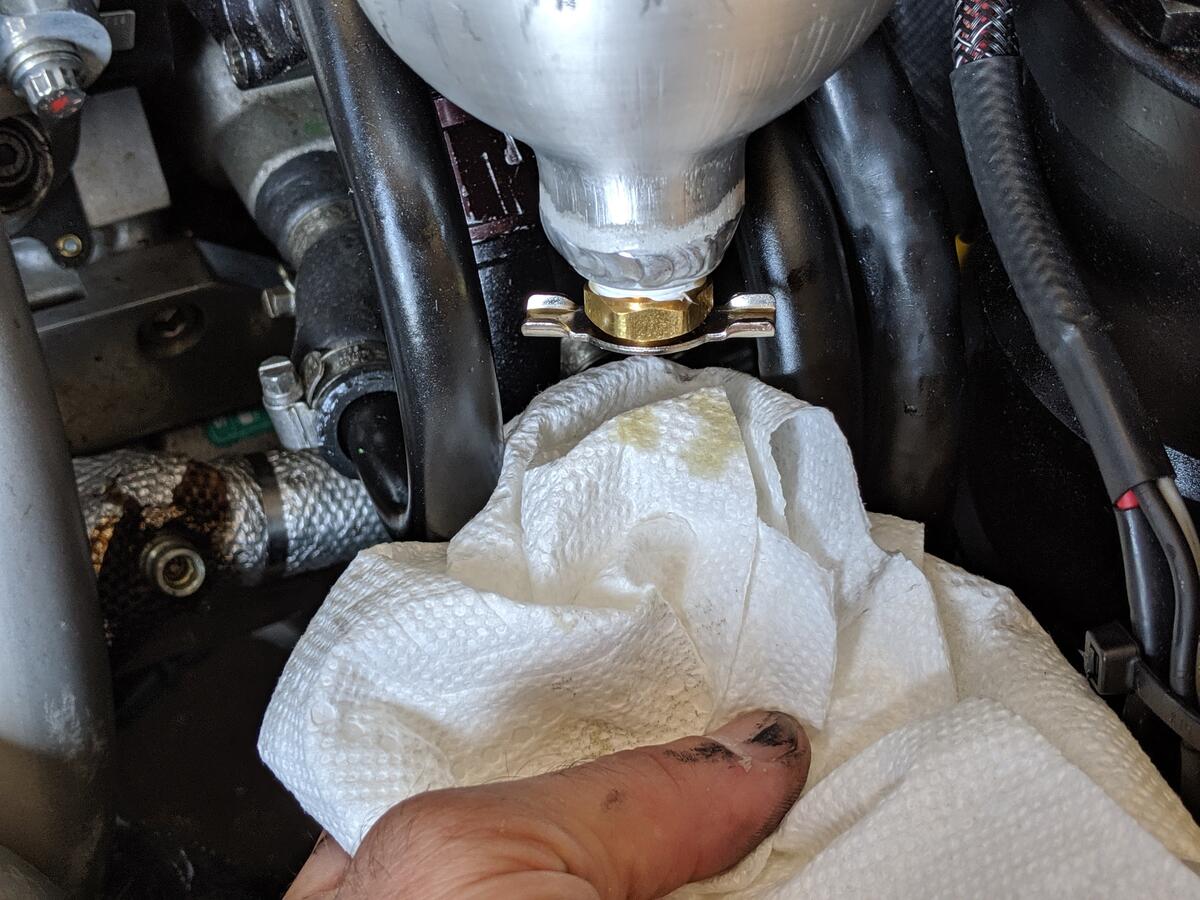I had an Ultima GTR through the shop a couple of years ago with a really loosely built LS7. When it came in, the engine could would fill the oil sump breather catch can to overflow in less than 10 miles of driving.
We went through a lot until we solved it.
First off, since the scavenge pump will pull oil, air, small children...pretty much anything out of the oil pan, we blocked off the valve cover vents to reduce air coming in. Dyno showed a bit of gain pulling the crankcase to a light vacuum and this somewhat reduced the catch can oil filling. The owner was very concerned of over-vacuum on the crankcase so to ease his nerves, I installed a MAP sensor to monitor crankcase vacuum; side benefit is being able to monitor ring health in the long term.
Finally, it occurred to me that since the engine had so much blowby being a very loose build, the single 8AN breather line from the sump tank to the catch can was seeing very high volumetric flow rate and entraining oil over to the catch can. My theory was, the small diameter breather was causing sufficient velocity to pull from the sump tank and larger/more diameter would reduce the gas velocity and keep the oil in the tank.
We installed a much larger catch can with room for 3 10AN (!) hoses for venting. This seemed to work at idle, so off to WGI we went. I bet the owner it would be the end of the problem and told him I'd drink whatever came out of a 20 minute session.
I was very relieved to be correct and not tethering myself to a toilet for a week, when he came off track there were only a couple of drops of oil that came out.
In your case, even changing out the existing hose to a larger one allows the same volumetric flow rate with a lower velocity through it and might help.










 Reply With Quote
Reply With Quote




